
Top UNESCO World Heritage Sites in Australia
Australia is known for its vast beauty and rich cultural heritage. It is home to 20 UNESCO World Heritage Sites. We've rounded up the best sites on Australia's East Coast.
Australia, a land of vast beauty and rich cultural heritage, is home to 20 UNESCO World Heritage Sites that captivate the imagination and beckon exploration. From the iconic wonders of the Great Barrier Reef to the ancient landscapes of Uluru-Kata Tjuta National Park, each site tells a story of geological marvels, indigenous traditions, and ecological diversity.
To be included on the UNESCO World Heritage List, a site must be of outstanding universal value so Australia’s collection of sites are some of the most extraordinary natural and cultural treasures on the planet.
With 20 to choose from, we’ve put together a list of the best natural World Heritage destinations on Australia’s East Coast.
The Great Barrier Reef
Explorations start at our Cairns Branch with Australia’s most famous UNESCO site – the Great Barrier Reef. A visit to this natural wonder is a must when travelling Australia.
Stretching for 2,300 kilometres along the Queensland coastline, the Great Barrier Reef is the largest living organism on the planet and showcases one of the most intricate ecosystems in the world. It is home to 3,000 coral reefs, 600 islands, 300 coral cays, and 150 mangrove islands, as well as a diverse array of marine life, including 1,625 fish species, 600 coral varieties, and over 30 species of whales and dolphins.
There are many ways to explore the Great Barrier Reef, from snorkelling and diving to sailing and flying. For those eager to dive, Green Island is a 45-minute boat ride from Cairns. Alternatively, opt for a full-day cruise or dive expedition for extended exploration of this mesmerizing underwater realm home to a kaleidoscope of colourful fish and vibrant coral. You may even catch a glimpse of the marine turtles that reside in the reef.
Head south to the Whitsundays, which is home to the most beautiful stretch of the Great Barrier Reef. Begin your adventure amidst the laid-back atmosphere of Airlie Beach, where you can embark on an unforgettable reef cruise. For an indulgent experience, consider treating yourself to a magical seaplane ride offering breathtaking views of Heart Reef.


The Wet Tropics
A natural UNESCO World Heritage Site, the Wet Tropics is the rainforest found north of Cairns, which stretches 8,940 square kilometres from Townsville in the south to Cooktown in the north. It’s the incredible biodiversity found within the Wet Tropics that netted this recognition in 1988.
Within this 450-kilometer-long park, over 85 species are unique to the Queensland rainforest. Serving as a biodiversity hotspot, nearly one-third of Australia's mammal species inhabit this park, with 12 species exclusive to the Wet Tropics. Among these are green possums, melomys, rat kangaroos, and others.
The Daintree Rainforest falls under the jurisdiction of the Wet Tropics and is the oldest rainforest in the world. With over 6,000 species to explore, encountering diverse flora and fauna is a highlight. Observe them on a hike, horseback ride, cruise, zip-line adventure, or even a night walk.
Additionally, we highly recommend exploring the cooler climes of the fertile Atherton Tablelands. Notably known for its rich dairy farming history spanning over a century, it has become a hub for cheese enthusiasts. Enjoy kayaking on Lake Barrine, hiking the scenic trails of the Misty Mountains, and delving into the wonders of the Crystal Caves.
Consider making a stop at Mission Beach, a two-hour drive south of Cairns. Still part of the Wet Tropics region, the main attraction here is the opportunity to encounter the Southern Cassowary in its natural habitat. Frequently spotted roaming through fields, paddocks, gardens, and resorts of Mission Beach, this endangered bird holds the title of Australia's largest land animal. The heaviest recorded being 94.5kg and standing nearly 2 meters tall.
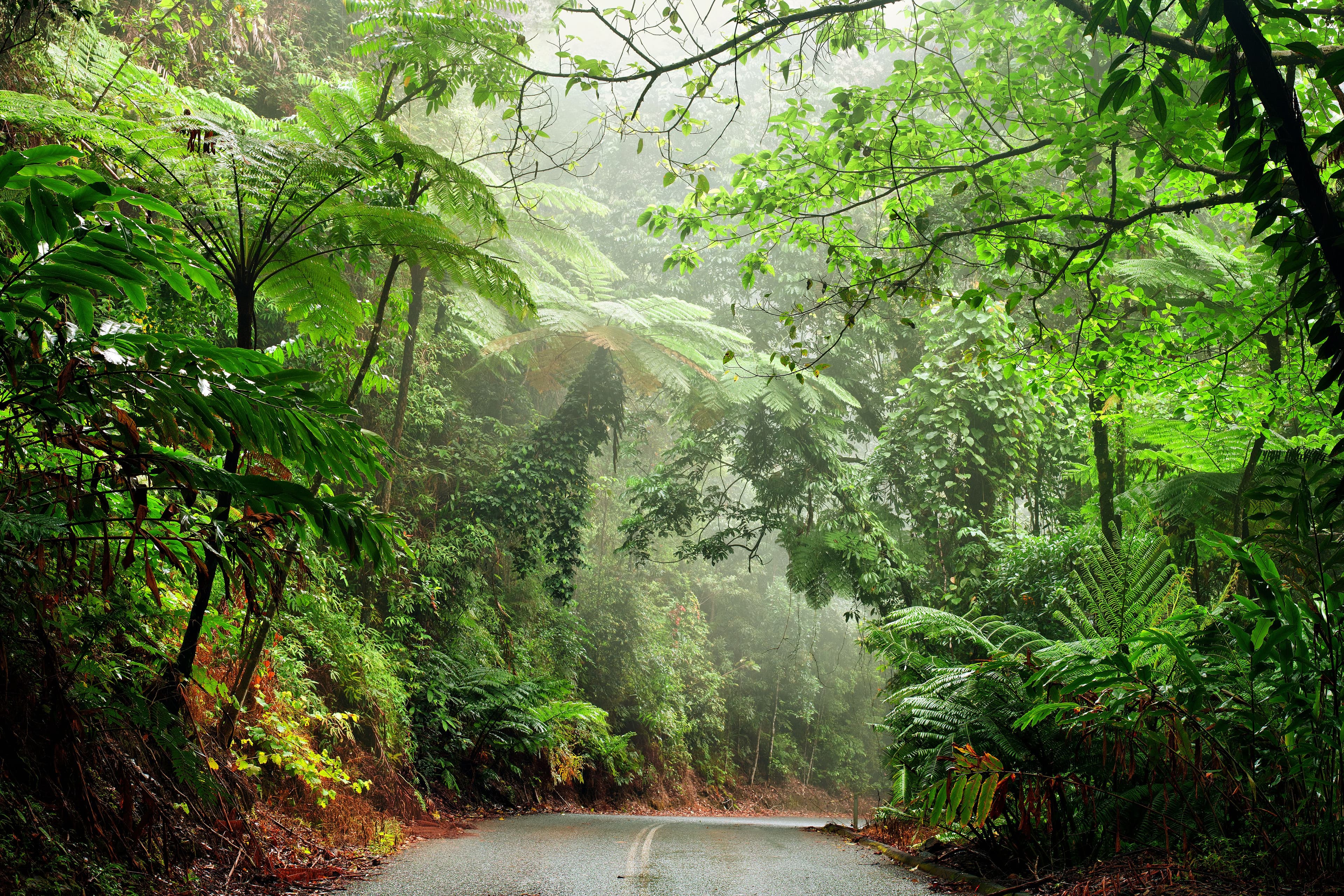
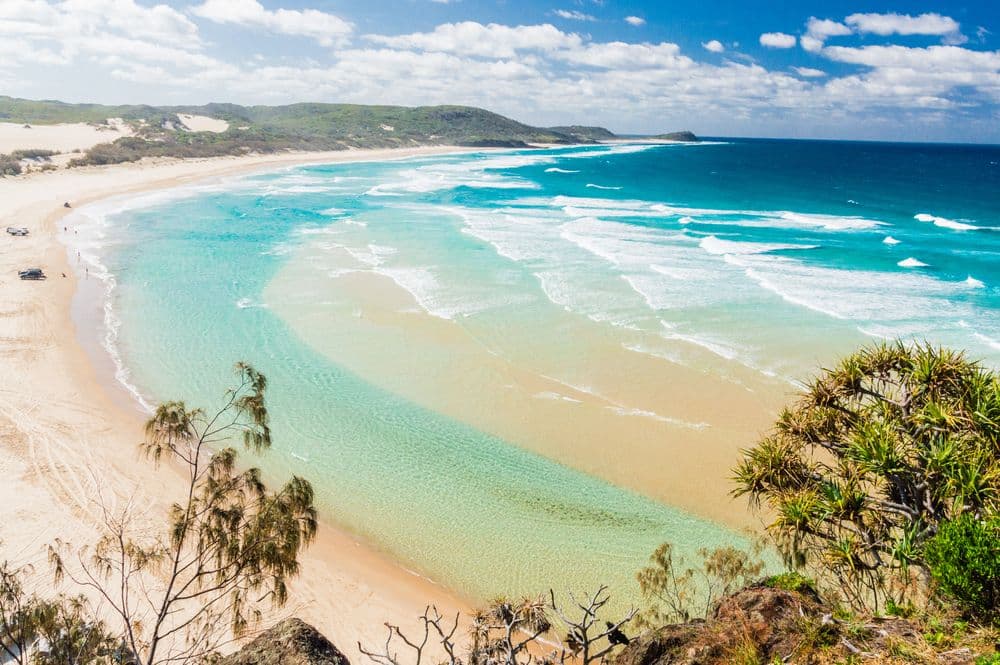
K’gari (Fraser Island)
Pick up your motorhome from our Brisbane branch and head north to Hervey Bay, here board a one-hour ferry to K’gari (formerly Fraser Island), an island made entirely of sand.
K'gari has a remarkable ability to cultivate plant life, due to fungi nourishing flora that thrives in the sandy terrain. With shifting sand dunes, untouched rainforests, and pristine freshwater lakes, the landscape is truly one-of-a-kind, and it's been around for a staggering 750,000 years.
Spanning 123km, there are a variety of activities for you to do on the island including ranger-led off-road adventure, a leisurely float down Eli Creek, a refreshing swim at Champagne Pools, or simply encountering the abundant wildlife.
You can spot swamp wallabies, echidnas, sugar gliders, and over 350 bird species, as well as dingoes. These wild canines, considered the purest in Eastern Australia, may appear friendly, but they're feral and can become aggressive if they feel threatened. Feeding or interacting with them is strictly prohibited by law, a measure put in place to ensure both visitor safety and the preservation of their natural habits and habitat.
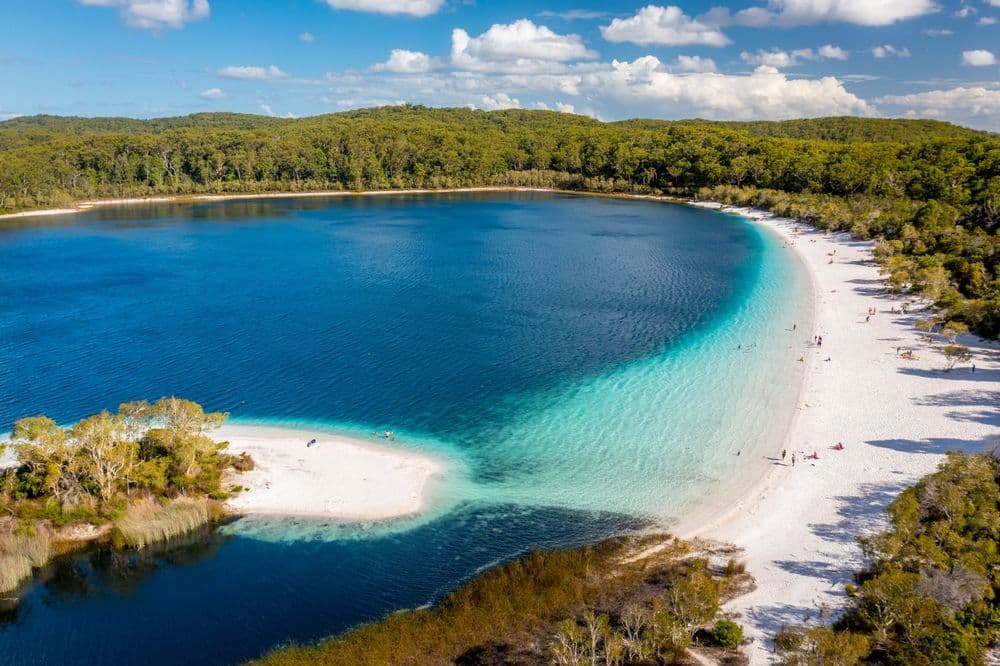
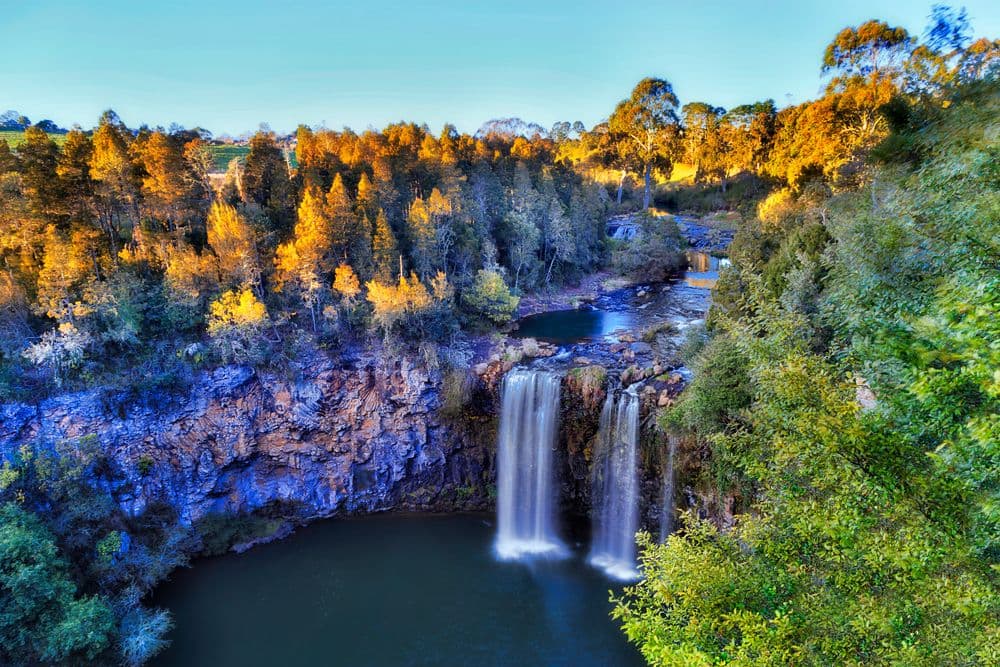
Gondwana Rainforest
Once a supercontinent that fragmented 180 million years ago, Gondwana is now divided into Africa, Australia, Antarctica, and the Indian Subcontinent.
Today, Gondwana is formed by several regions, acknowledged by UNESCO for its significant conservation value. Spanning northern New South Wales and Southern Queensland, the Gondwana area comprises 50 distinct regions. The Gondwana Rainforests stands out as the largest subtropical rainforest globally, providing sanctuary to over 270 endangered species, some tracing back as far as 100,000 years!
Embarking on a journey through any of the Gondwana Rainforests is a journey back in time. Our preferred park on the Queensland side is Springbrook National Park, cherished for its enchanting waterfalls, babbling streams, and remarkable biodiversity. Spend your days exploring the park, marveling at the majestic Purlingbrook Falls and navigating the Twin Falls Circuit.
Remember to carry a flashlight and venture to Natural Bridge by dusk. Here, the glowworms illuminate the surroundings, particularly during the wetter months from December to March. Be sure to secure a campsite within the park to maximize your time in this ancient paradise.
Dorrigo National Park beckons with its impressive 70-meter-long, 21-meter-high skywalk. This elevated pathway offers an excellent vantage point for observing the abundant avian wildlife. The panoramic views overlooking the Rosewood rainforest basin are truly breathtaking. If you prefer to delve among the tree roots rather than soar above the treetops, the Crystal Shower Falls provides a refreshing experience. You can even walk behind the falls and feel the gentle mist. Along the Dorrigo National Park loop trail, you'll also encounter the picturesque Danger Falls. Located just an hour from Coffs Harbour, Dorrigo is easily accessible for a day trip.
Additionally, the Antarctica Beech Forest walking track in Barrington Tops is another fantastic option for a short stroll lasting about 1.5 hours. This trail offers a glimpse into the ancient and significant flora of the Gondwana Rainforests, which harbour most of the world's Antarctica Beech cool temperate forest.


The Greater Blue Mountains
The sandstone plateaus, deep gorges, and the Jenolan Caves, boasting the world's largest collection of eucalypt tree species, earned the Greater Blue Mountains a coveted spot on the UNESCO Natural World Heritage list in 2007.
While Katoomba and the Blue Mountains National Park may draw the bulk of visitors, the UNESCO-designated region offers more than these attractions alone. Comprising eight protected areas, hence the 'greater' designation, the evolution of plant life within the Greater Blue Mountains is particularly celebrated.
Spread across a combined area of one million hectares, the region serves as a sanctuary for 400 species of vertebrate animals and 265 bird species. Among them are the endangered tiger quoll and yellow-bellied glider. With an abundance of eucalypts to feast on, the chances of spotting a koala are also notably high.
Explore the sandstone plateau spanning across the eight protected areas. Our favourite picks include the ancient caves nestled within the Jenolan Karst Conservation Reserve and the sheer drops found from the lookouts at Kanangra-Boyd National Park.
Located an hour away from Katoomba, the Jenolan Caves stand as the world's oldest accessible caves (340 million years). Extending over 40 kilometres, multi-level passages wind through the caverns, unveiling awe-inspiring chambers boasting ceilings towering up to 50 meters. There are also bushwalks around the caves, adventurous caving expeditions, and even night ghost tours for those seeking diverse experiences.
The Kanangra Walls serve as the highlight of Kanangra-Boyd National Park. The impressive valleys, sheer cliff faces, and ethereal blue vistas combine to create a scene that feels out of this world. Enjoy the panoramic views on shorter walks like Lookout Walk or Waterfall Walk or opt for the moderately challenging 2-hour Plateau Walk.
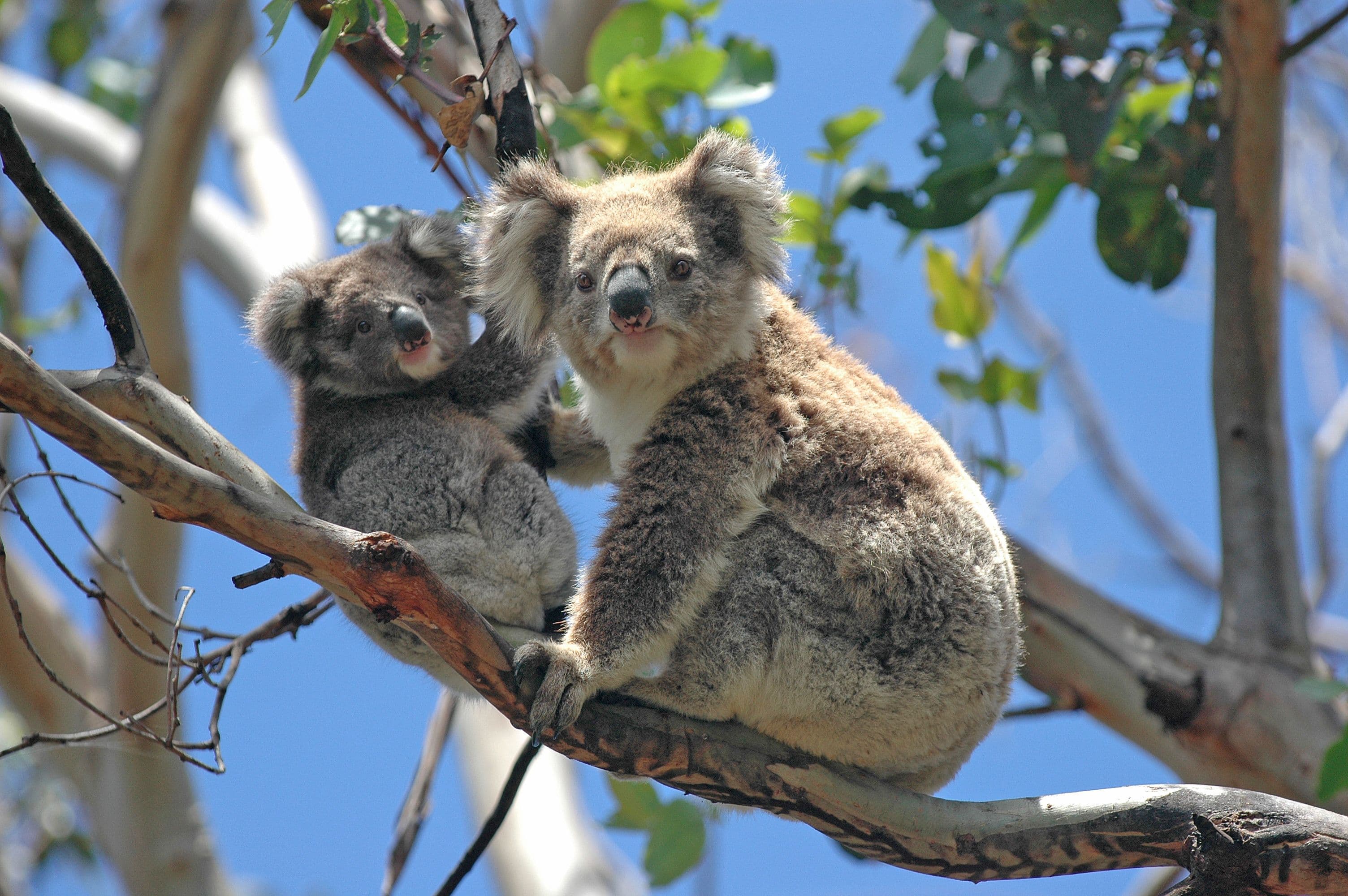
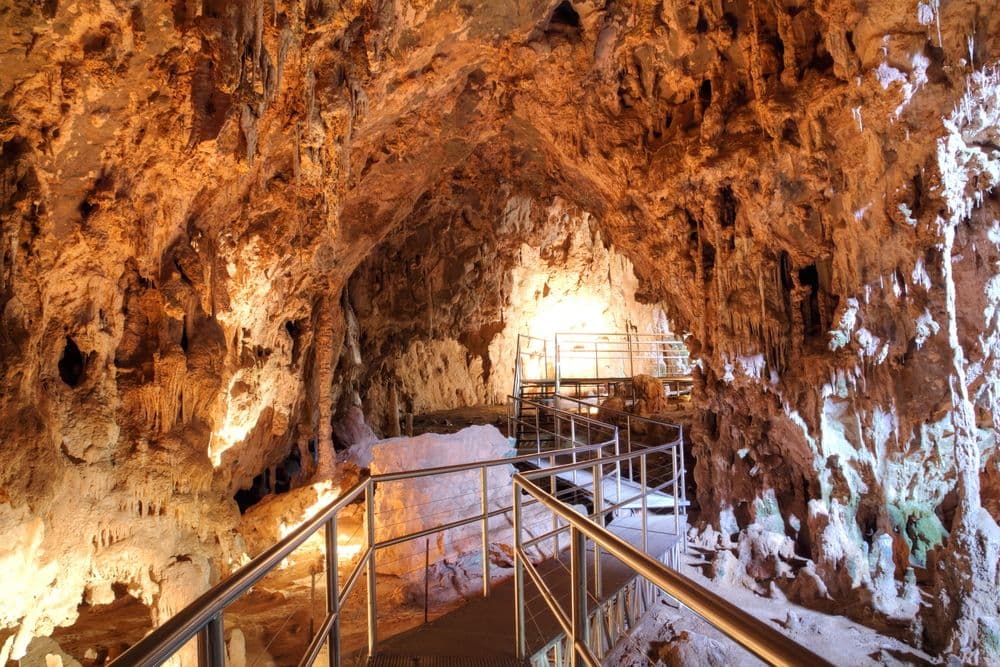
Budj Bim National Park
Budj Bim National Park, nestled in the southwest corner of Victoria, Australia, is a testament to ancient Aboriginal ingenuity and resilience. At its heart lies the Budj Bim Cultural Landscape, a UNESCO World Heritage site renowned for its remarkable cultural and archaeological significance. For over 6,600 years, the Gunditjmara people crafted an intricate aquaculture system within this landscape, consisting of channels, weirs, and dams designed for trapping and farming eels.
Today, visitors to Budj Bim National Park can explore this enduring legacy, marvelling at the remnants of ancient settlements and the intricate engineering that shaped the landscape. Moreover, the park serves as a living connection to the Gunditjmara people, who continue to maintain their cultural practices and share their rich heritage with the world.
We’ve barely scratched the surface of Australian UNESCO World Heritage Sites, so we do encourage you to explore the rest of what this extraordinary country has to offer.
To secure your Australian motorhome hire, click BOOK HERE or call our friendly team on 1800 875 018.